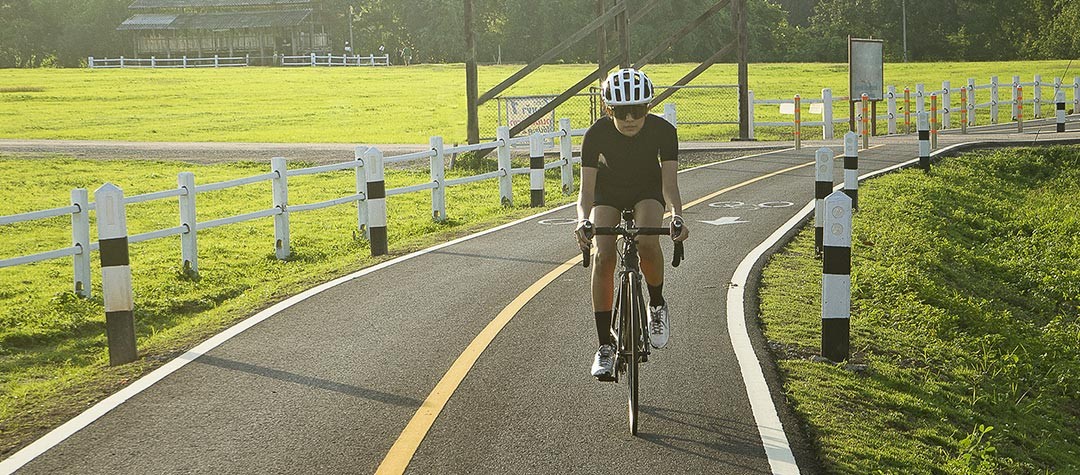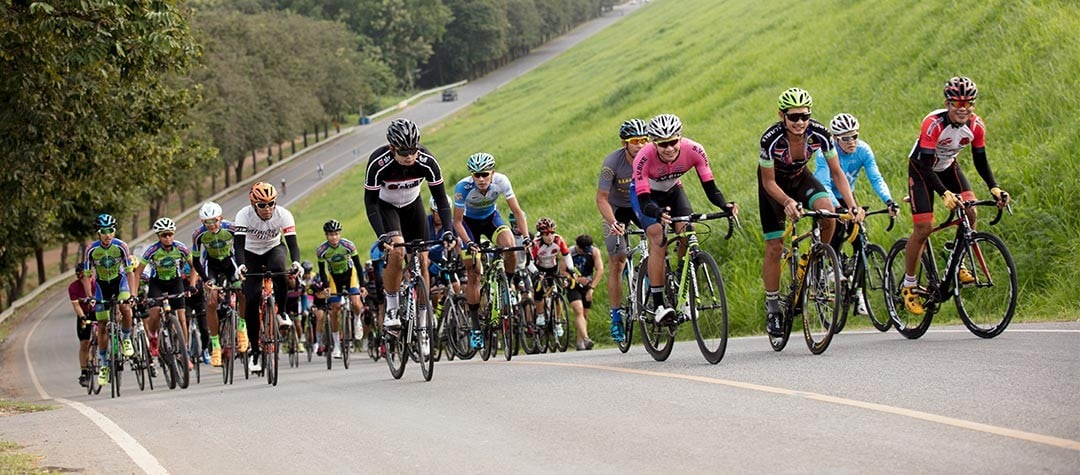Can commuting by bike really be useful for training purposes? Matt Stephens tell you how commuting can form a major part of your training regime.
The simple answer to this question is a resounding ‘Yes.’ And I can state that with conviction as doing exactly this formed the basis of my training for the vast majority of my racing career. It certainly had its challenges as I juggled work, family (and all the other things that life throws at you) but with self-discipline, good time management, motivation and above all desire, it worked. Plus I saved what I would imagine to be a rather hefty sum of cash through not using a car!
The distance of my commute varied over the years; from a 5 mile round trip up to 25 and 50 miles, so at times distance/volume wasn’t an issue at all, whilst with the shorter commute I often added on a loop after work.
The key to the most effective use of commuting miles is to vary the training.
The key to the most effective use of these commuting miles was to vary the training; mixing it up so as to not get into a rut, which is an easy trap to fall into if riding the same regular route. The other important constant over the years was that I mapped out each day of the week in advance, ensuring I made the best use of my valuable time.
Here’s a look in more detail at the fundamental elements of turning your commute from just a ‘ride’ into effective, enjoyable training.
Planning
Write your weekly plan in a diary. This simple exercise is effective because it confirms the commitment you have made you yourself. You don’t have to go overboard, a simple outline of your training plan for each day will suffice. Although you can put as much detail in as your wish, just as long as you are clear as to what is ahead.
In addition to the plan, write down briefly what you actually did; distance/hours and how you felt during and post ride. This info can then be used as a tool to help identify what works best for you and is great to reflect on as you progress. It can also assist in highlighting fatigue or even the onset/identification of illness.
It’s also a great way of planning the lead up to an event such as a 100 mile or 100km sportive. You can them strategically build in your taper period too.
Training Variation
The focus of a week’s training for me (in addition to gaining speed, strength and endurance) was to deconstruct the key elements of road racing and work on them individually. So, longer threshold efforts, short intervals, sprints, climbing etc. This can of course work for any discipline.
Time is a valuable commodity so make each minute count.
Ask yourself, ‘what exactly am I training for?’ It could be simply building up to your first 50 mile ride or perhaps a time trial? Once you are clear in your objectives you can then start to look at the type of training to incorporate into your commute. Remember, time is a valuable commodity so make each minute count.
Note: If you have a hilly route incorporate some specific hill efforts on the ride back, rather than simply ‘riding the climbs.’
Example 1: Longer Commute
| Monday | Drive/public transport to work. |
|---|---|
| Tuesday | Steady ride in, low gears high cadence. Split ride home into between 5-10 x 10 second sprints with 4-5 minutes recovery in between. |
| Wednesday | Steady ride in. Hard TT type threshold effort all the way home. Ensure 5 min warm up and warm down. |
| Thursday | Easy ride in. 5 x 2 min intervals with 5 mins recovery in between each effort. |
| Friday | Drive/public transport to work. |
| Saturday | 90 mins café run. Easy. |
| Sunday | Event or long ride. |
As you can see, this particular week has a recovery day at the start so you are rested from the efforts of the Sunday. There is then a harder block midweek that as well as focussing improving power and speed will help with overall endurance due to the three back to back days. There is then a distinct ‘taper’ at the back end of the week leading in to the Sunday. This week is non prescriptive but gives an idea of what to incorporate with the overriding theme being variation and quality over quantity. Given the longer commute distance there are two additional rest days.
Example 2: Shorter Commute (steady ride to work with longer loop back).
| Monday | Recovery day. Easy ride to work and back. |
|---|---|
| Tuesday | 1 hour hard with 3 x hill reps of 3 mins each. |
| Wednesday | 1 hour with 10 x 10 second sprints. Flat tempo ride with a sprint every 6 mins. |
| Thursday | 1 hour with 3 x 5 min threshold efforts with 10 minutes recovery between each effort. |
| Friday | Easy day. (optional no riding at all or just short commute) |
| Saturday | 90 mins café run. Easy. |
| Sunday | Event or long ride. |
Given the distance each day is shorter there are more riding days. The week still contains back to back days to help build endurance but still has same mini taper as example 1. This is a typical week of mine when I was training to race. Not a great deal of volume but plenty of quality and recovery.
The distance you have to ride to work will be a major contributing factor in determining the type of training you manage to weave in. Everyone is different and has varying objectives/abilities so in the first instance it is simply a matter of trial and error, but this is where keeping a training diary really comes into it’s own.
Personally I found that riding at a steady/easy pace to work then training harder and more specifically after work more effective. On my 10 mile commute to work I’d ride at a relatively easy pace, yet I’d still use this 35 minute ride to work on cadence for example (spinning a low gear at high revs but still with a relatively low perceived effort). It could be that you prefer to make a harder effort before work. If this suits you and you have shower facilities at work then fine!
Conversely if your ride is a more considerable one; let’s say between a 30 and 40 mile round trip, it’s just as important not to do too much. Simply riding this distance each week, even at a steady pace, around a full time job or study could result in you becoming over fatigued. So, instead target 3 days within a week when you’ll ride into work whilst using the car or public transport the other two days. Just ensure that for each of the three commutes you're riding is different.
Rest and Recuperation
This is absolutely crucial. You can’t begin to train if your mind and body are jaded. Listen to your body and be honest with yourself. This is absolutely paramount when training around a full time job. If you are feeling off colour or weary sometimes the best course of action is to rest for a few days and put the bike away. I found that doing this soon recharged my batteries, putting me back in the right place mentally and physically to tackle training again. If you continue to train whilst fatigued you risk overtraining which can put immense stress on your immune system, leading to actual detraining and even illness.
If you continue to train whilst fatigued you risk overtraining which can put immense stress on your immune system, leading to actual detraining and even illness.
I’ve over-trained and trained through illness in the past and it’s not something I’ll ever do again. I simply can’t stress enough that although sticking to a training plan is important, building a degree of flexibility within it is equally so. That includes taking a day off the bike or simply backing off the training by replacing an interval session with a steady ride for example.
It goes without saying that work can be become a slog, so don’t let the commute become one too. Incorporating variety into your ride will help alleviate that mundane sense of routine. And, if you are fresh, motivated and keen you’ll get far more from your training. It can take a while to a get an even balance but after a while you should settle on a routine that works for you. Every now and again ask yourself if you’re enjoying riding your bike. If the answer is ‘yes’ then you’re on the right track. If it’s a ‘no’ then take stock, reflect on your diary, make a few changes and maybe take a couple of days off.














